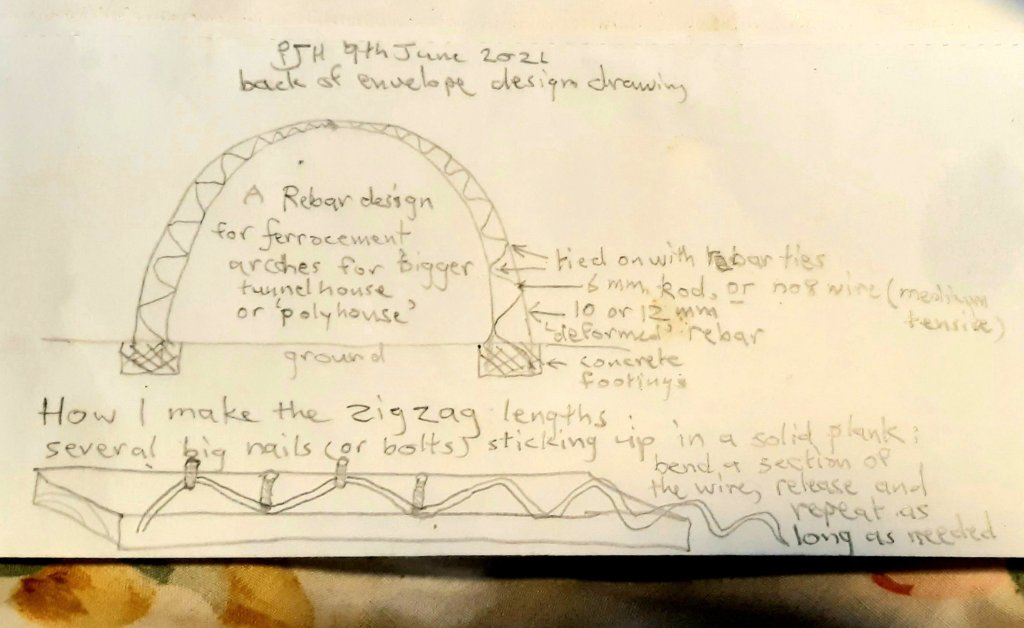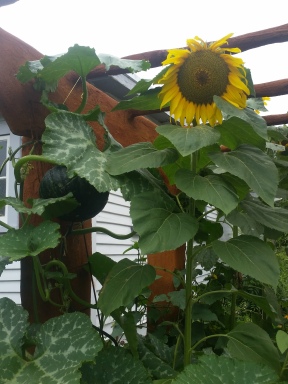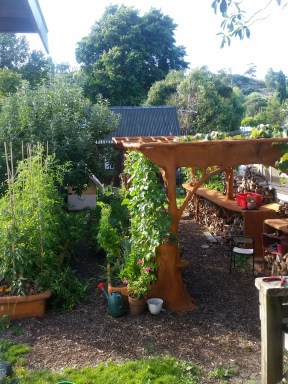I’ve been working on a new ideal rebar bender for the 6mm rebar…will work for the 10 mm or 12mm too I’m sure. Requires welding but worth it I think. The bending grooves I cut using standard angle grinder. One model I made by welding a square of hard steel onto the flattened end of a piece of old electrical conduit pipe, the other is the cut off end of an old wrench. Handles formed by winding soft polypropylene cord around the pipe with plenty of pva glue. Frayed ends soaked in glue can be tucked under the windings.
Also see this cool way to crosscut chicken mesh to make nice stretchy strips for winding around curved railings or spirals such as this sculpture I’m building to house a spinning bronze ‘sun-wheel’ for a customer. I use strips a lot now. It’s quick to cut them if you just fold a length of chicken mesh lengthwise twice so it’s a quarter as wide, then tinsnip this long strip crosswise…strips about 150mm to 25mm wide. They stack well until use when you just grab the ends and pull. Strips cut like this are very stretchable. There are cut ends of mesh of course, but I’ve found if I wear leather rigger’s gloves (soft pigskin – quite cheap) they don’t hurt… also on the first plaster coat I now wear either rigger’s gloves or thick nitrile gloves safety equipment shops have these..or the local bigger hardware shop (Bunnings here in nz). The sharp ends of the mesh are buried in plaster at the first coat with a little care, or at least by the second coat. For longer rails or tubes of ferro – e.g. branches or garden arches – it is the only way to go I think. And being wound on in overlapping windings it doesn’t need much – or any – lacing wire to hold it in place, just at the final end of the winding. See one of the folded cut strips in the first picture. Note the tins nips screwed down for quick snipping.





















